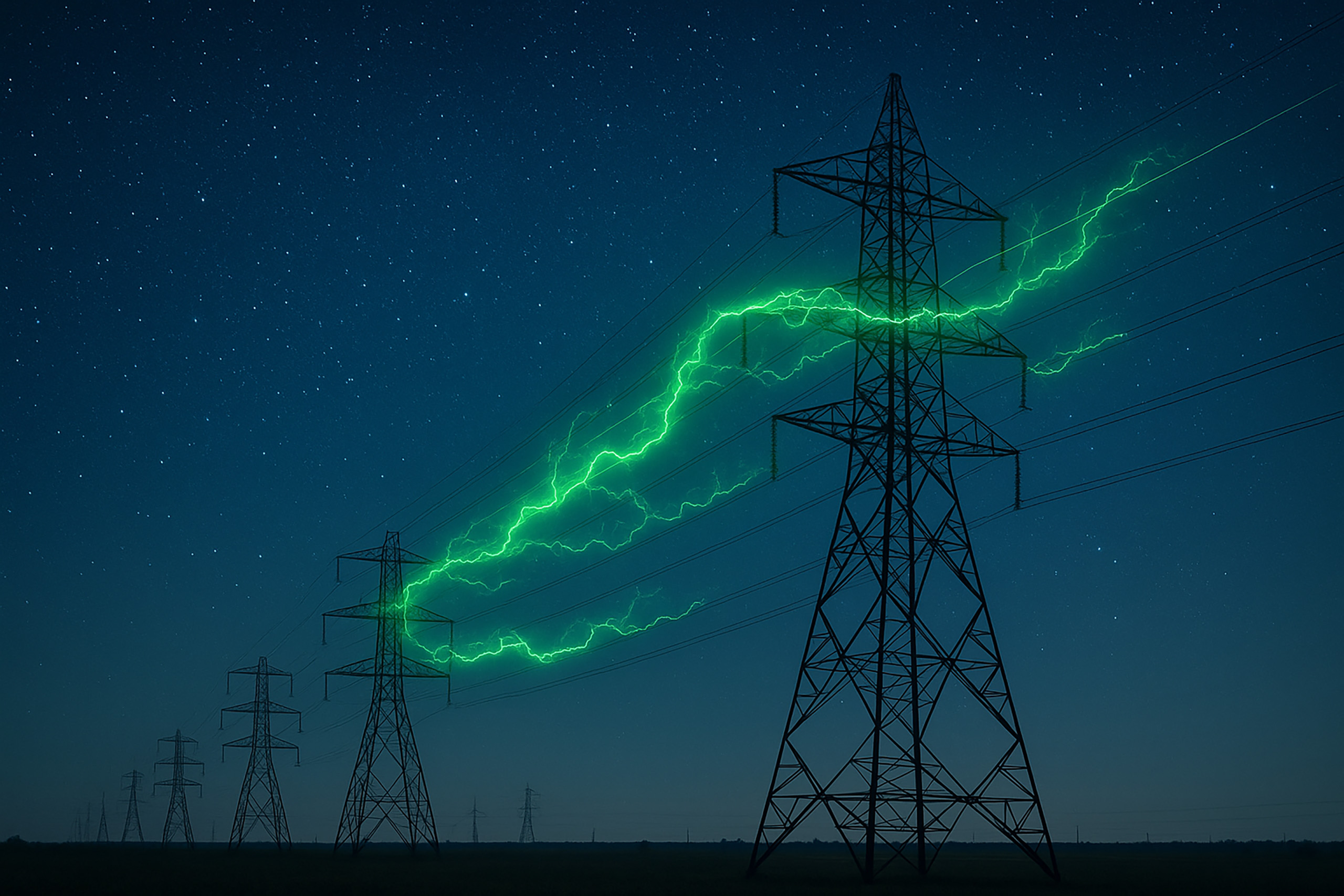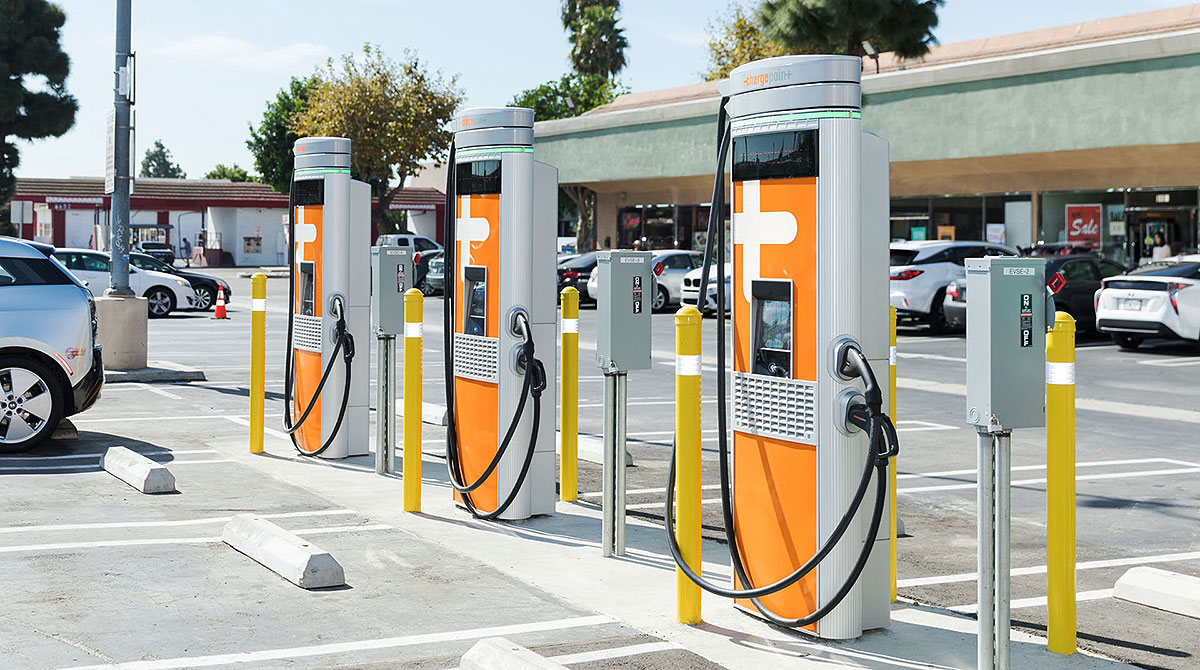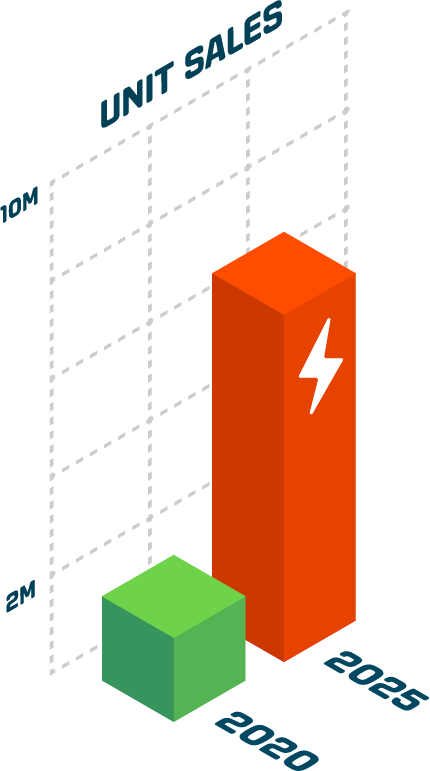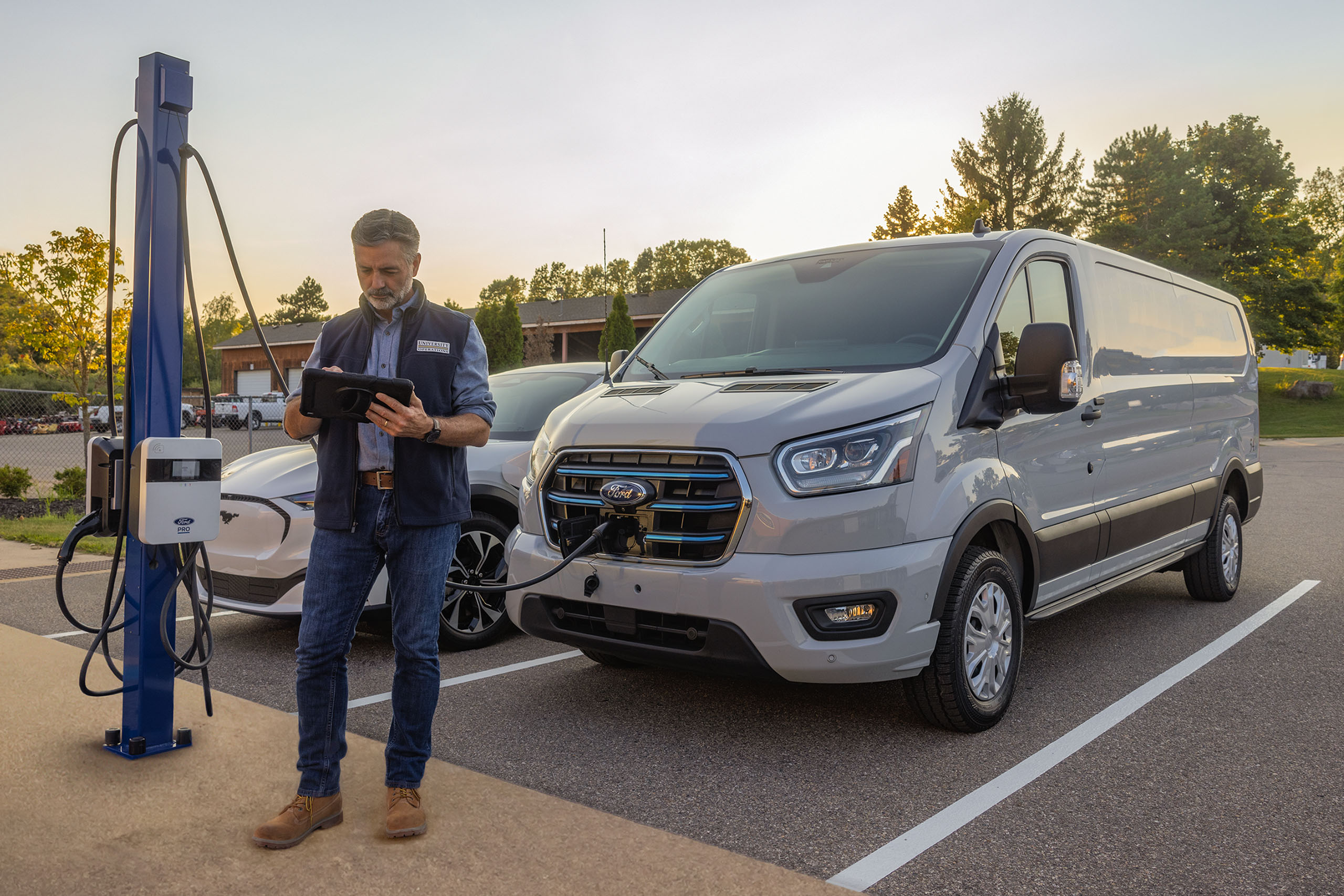

Buying an EV Charging Station
Demand in the United States for electric vehicles (EVs) is increasing quickly.

According to Frost & Sullivan, the US EVs market is likely to approach 7 million unit sales by 2025, up from 1.4 million in 2020. And government incentives are driving the demand, with approximately 90% of states having implemented their own programs.
Even the government at the highest level is recognizing the importance of EV adoption. As part of a broader $2 trillion economic stimulus and infrastructure plan, President Biden is proposing a $174 billion investment in the US EV market.
The investment aims to win the market from China, which leads the US in EV market share by two-thirds, and to move the nation closer toward a clean-energy economy. Some of those dollars will go toward helping state and local governments and the private sector build a national network of 500,000 chargers by 2030.
The messaging is clear—now is the time to adopt. Here are the basics of what you need to know about buying an EV charging station for your business.
How Can an EV Charging Station Benefit Your Organization?
EV stations offer numerous benefits to organizations that have them on-site. Here are a few of the more notable benefits.
New customer acquisition

ChargePoint, the nation’s leading EV manufacturer, found that EV charging stations increase customer “dwell time” by an average of 50 minutes. In other words, EV drivers will spend more time and money at businesses where their cars can recharge than at businesses where they can’t.
Talent attraction and retention
What’s more, an on-premises EV charging station provides a tangible benefit to employees driving EVs. Investing in on-site EV chargers shows commitment to their satisfaction at work and will help not only to keep them working for you but also to attract new talent driving EVs as well.
In one case study from ChargePoint, Raytheon used EV charging stations to successfully retain employees and attract new recruits, all the while reaching its sustainability goals—the company saved 35,000 gallons of gasoline and 117,145 kilograms of greenhouse gas emissions after five years.
Modern brand messaging

How Much Does an EV Charging Station Cost?
The answer is complicated. A typical two-unit, four-port charging station could cost $50,000 or more before incentives and tax credits. But no two EV charger installations cost the same.
Infrastructure costs
Before you can install electric charging stations on your properties, you need to make sure your electrical capacity can support your chargers. Infrastructure costs can vary widely, depending on the state of your properties’ electrical infrastructure, how much space you need for your stations, and how close your chargers will be to a power supply. Installing a level two station can range from $4,000 – $6,000 per port in most non-complicated installations, but often more.
Hardware costs
You also have to buy the chargers. There are three types of chargers to choose from: level one, level two, or level three (direct-current fast-charging) chargers.



Incentives
Costs on paper mount quickly. But buying and installing chargers can be much more affordable in practice. Government incentives can cover as much as 80% or more of the total EV charger infrastructure and installation cost.
For example, in New York, the Charge Ready program offers rebates of $4,000 per port installation of level-two chargers at qualifying sites, plus an additional $500 per port for level-two chargers installed within disadvantaged communities. In addition, the Make-Ready program offers rebates covering 50% to 100% of eligible infrastructure costs, with installations in disadvantaged communities receiving higher incentives.
You can stack tax credits on top of the incentive programs you qualify for to whittle down EV charger installation costs further. The New York Department of Taxation and Finance, for instance, offers an alternative fueling infrastructure tax credit that covers 50% of the cost of qualifying investments in EV fueling infrastructure, up to $5,000.
Future Energy works diligently with qualifying customers to identify and procure all available grants, rebates, and tax credits. We are an approved contractor under many incentive programs, including Charge Ready and Make-Ready. And all our products and networks are program-approved as well, making us a trusted partner for customers seeking financial assistance for EV charger installation.
How Is Future Energy Different?
The difference lies in the data. Future Energy has partnered with ChargePoint, the largest network of EV charging stations in the world, to deliver a robust solution that transforms the standard EV station model and maximizes value creation through data visualization and management.
We’ve combined well-built hardware from ChargePoint with exceptionally well-developed proprietary software to create a data-driven turnkey digital and physical EV charging environment called ChargeParc™. It’s the first of its kind.
ChargeParc™
As drivers use ChargeParc™ to recharge, the environment enables you not only to visualize driver and usage data but also to remotely manage the environment and all other intelligence devices and systems on your property in real-time. The environment’s backbone is our exclusive data visualization and management software, Interface ™.
Interface pulls all external environment data from ChargeParc™ stations and all internal environment data from your property to display it all on a single dashboard. It provides you with a clear, unified data picture that helps improve understanding, change outcomes, and expand value while supporting a variety of use cases, from AI reporting and machine learning analytics to parking surveillance and enforcement.
To learn more about ChargeParc™, contact us today.



